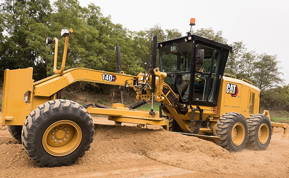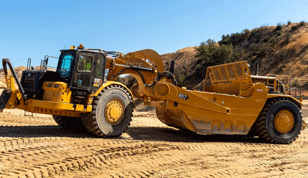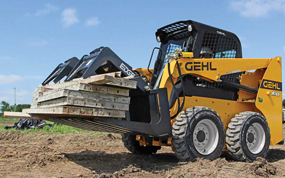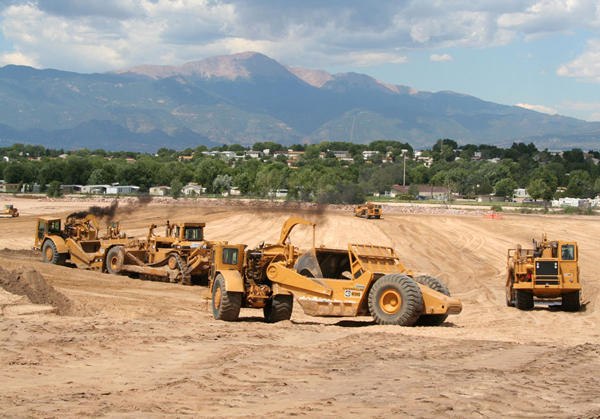Grading is frequently used to provide a level base or a specific slope. Grading can be used to prepare land for landscaping or construction projects, establish new drainage patterns, or improve the aesthetics of the landscape. Grading frequently entails tasks such as cutting into the ground, leveling, and filling by adding, removing, or moving dirt.
What Are the Best Grading Equipment Options? Choosing the right machinery for your specific grading project will make your job easier and more efficient, even if many pieces of heavy equipment are versatile.

- Motor Graders: Originally designed for road construction and maintenance, excel at efficient, high-precision grading. Graders are used in a variety of industries, including construction, mining, landscaping, and roadwork, for tasks such as leveling surfaces, laying building foundations, spreading materials, digging ditches, constructing slopes, and more. Motor graders are useful machines for a variety of projects due to their versatility, efficiency, and maneuverability. Because motor graders have rubber tires, they have good traction on a variety of surfaces and can work at high speeds.
Graders can also be driven on the road, making them easy to transport between job sites. While the size of motor graders may limit them to larger projects, their main disadvantage is that they require skilled operators with experience. Some consider graders to be one of the more difficult machines to learn to operate, which may make them unsuitable for newcomers to the construction industry.

- Bulldozers: These units are powerful earthmoving machines that can use their front blade to perform grading operations ranging from leveling land for roads, buildings, landscaping, and railways to putting the finishing touches on already graded surfaces. Some dozers have grade control technology, which automates blade control to improve the accuracy and speed of any grading project.
One of the bulldozer’s most significant advantages is the sheer number of attachments available, including grader blades of various sizes and materials. The bulldozer, on the other hand, is heavy construction equipment that is not intended for precision work. A dozer may not be the best choice if you need a machine that can perform fine grading while causing minimal damage to the surrounding environment.

- Wheel Tractor Scrapers: Wheel tractor scrapers have a tractor in front and a hopper at the back. A horizontal blade slices into the dirt and fills the bowl as the tractor travels forward. Scrapers can move the gathered material to another area after finishing their grading operation.
Some scrapers, such as single engine scrapers or non-motorized pull-type scrapers, may require the assistance of another machine to sustain them, especially on rougher terrain. The versatile scraper, on the other hand, may accomplish numerous jobs in a single pass, including leveling, collecting, carrying, and dumping the material. As a result, you won’t need to rent additional equipment, such as a dump truck, to finish the work. Scrapers also have a significant benefit when it comes to scrubbing damp surfaces.

- Skid Steer Loaders: These small, adaptable, self-propelled devices do large tasks in small places. Small-scale grading tasks, such as landscaping, residential lots, and backfilling, might benefit from the use of skid steers. Loaders include front-mounted buckets that can scoop materials and allow operators to position or connect to hydraulic accessories to improve grading results. These tactics aid in weight transfer, preventing the front of the machine from lifting off the ground and maintaining the track in full contact for increased traction.
Skid steer loaders might have ground pressure issues since they are small yet heavy machinery. It may be difficult to grade with some skid steers without leaving visible traces, especially on softer terrain. Furthermore, because their front and back wheels are mechanically attached, skid steers slide on surfaces when turning. They cannot be steered like wheel loaders. Skid steer loaders, on the other hand, have a range of attachments for grading, the capacity to operate over completed surfaces, and, of course, the durability for large work in tight areas.






